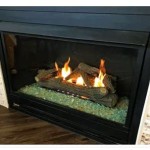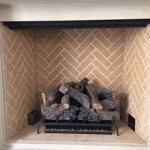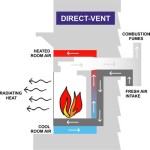Fake Fireplace Mantels: A Comprehensive Guide
Fireplace mantels have evolved significantly over time, moving from purely functional elements designed to manage smoke dispersal to decorative focal points in modern homes. With the increasing popularity of electric fireplaces and the desire to incorporate architectural interest into spaces without the need for a traditional, wood-burning fireplace, fake fireplace mantels have become a sought-after solution. These replicas offer the aesthetic appeal of a classic mantel without the associated costs, construction, or maintenance requirements. This article will explore the various aspects of fake fireplace mantels, covering materials, styles, installation considerations, and benefits, providing a comprehensive understanding of this versatile design element.
A fake fireplace mantel, also known as a faux mantel or a decorative mantel, is a non-functional structure designed to mimic the appearance of a traditional fireplace mantel. It typically consists of a shelf, often supported by decorative corbels or legs, and can be mounted against a wall, either above an electric fireplace, a blank wall space, or even integrated with an existing, non-working fireplace. The primary purpose of a fake mantel is to enhance the visual appeal of a room, adding character and a sense of warmth and architectural detail.
While lacking the functionality of a genuine fireplace mantel, fake mantels offer several advantages. They are generally more affordable than constructing a traditional fireplace and mantel from scratch. Installation is typically simpler, requiring basic tools and minimal construction knowledge. Furthermore, they provide a flexible design solution, allowing homeowners to customize their space without the limitations imposed by structural or ventilation constraints. The versatility of fake mantels extends to their material options, ranging from wood and MDF to composite materials and even faux stone, catering to a wide range of aesthetic preferences and budgets.
Key Considerations When Choosing a Fake Fireplace Mantel
Selecting the right fake fireplace mantel involves carefully considering several factors to ensure it complements the overall design of the room and meets specific needs. The first and foremost consideration is the overall style and aesthetic of the space. A rustic, farmhouse-style room would benefit from a mantel made of distressed wood, while a more contemporary space might call for a sleek, minimalist design in a smooth, painted finish. The size and proportions of the mantel should also be carefully considered, taking into account the dimensions of the wall space and any existing furniture.
Material selection is another crucial aspect. Wood mantels offer a classic and timeless look, but they can be more expensive and require ongoing maintenance. Medium Density Fiberboard (MDF) mantels are a more affordable option that can be easily painted or finished to mimic the appearance of wood. Composite materials offer a combination of durability and affordability, often resembling natural stone or brick. The choice of material will ultimately depend on budget, aesthetic preferences, and the level of maintenance the homeowner is willing to undertake.
Beyond style and materials, the ease of installation should also be factored into the decision-making process. Some fake mantels are designed for simple DIY installation, while others may require professional assistance. The mounting system, included hardware, and instructions should be carefully reviewed to ensure a smooth and straightforward installation. Considering these factors will result in a selection that enhances the beauty of the space while aligning with practical considerations.
Styles and Designs of Fake Fireplace Mantels
The variety of styles and designs available for fake fireplace mantels is extensive, offering options ranging from traditional and ornate to modern and minimalist. Traditional mantels often feature intricate carvings, fluted columns, and decorative corbels, evoking a sense of classic elegance. These mantels are typically made of wood and finished with rich stains or paints, adding warmth and character to the room.
Modern mantels, on the other hand, tend to be more streamlined and minimalist in design. They often feature clean lines, geometric shapes, and a simple, unadorned aesthetic. These mantels can be made of various materials, including wood, metal, and even glass, reflecting a contemporary sensibility. The finish is usually a smooth, matte paint or a natural wood grain, creating a sleek and sophisticated look.
Beyond traditional and modern styles, there are also rustic and farmhouse mantels that embody a more relaxed and informal aesthetic. These mantels often feature distressed wood, reclaimed materials, and a weathered finish, creating a sense of warmth and authenticity. They can be adorned with simple decorative elements, such as iron brackets or vintage hardware, adding to their rustic charm. The wide range of styles ensures that there is a fake fireplace mantel to suit virtually any design preference, allowing homeowners to personalize their space with a unique and visually appealing focal point.
Installation and Placement Considerations
The installation of a fake fireplace mantel is generally a straightforward process, but careful planning and execution are essential to ensure a secure and aesthetically pleasing result. Before installation, it is crucial to measure the available wall space and determine the desired height and width of the mantel. The mantel should be centered on the wall and positioned at a comfortable viewing height, typically around 48 to 54 inches from the floor to the top of the mantel shelf.
The mounting method will depend on the weight of the mantel and the type of wall it is being attached to. For lighter mantels, adhesive or simple brackets may suffice. However, heavier mantels will require more robust support, such as screws anchored directly into wall studs or a mounting board securely attached to the wall. It is crucial to use appropriate hardware and follow the manufacturer's instructions carefully to ensure that the mantel is securely mounted and can safely support any decorative items placed on the shelf.
When placing a fake fireplace mantel, it is important to consider the surrounding elements in the room. The mantel should be placed in a location that complements the existing furniture and décor, creating a cohesive and balanced look. If the mantel is being installed above an electric fireplace, ensure that there is adequate clearance between the fireplace and the mantel to prevent overheating. Furthermore, consider the placement of electrical outlets and lighting fixtures to create a functional and visually appealing focal point. Thoughtful placement will maximize the impact of the mantel and create a warm and inviting atmosphere in the room.

Faux Fireplace Mantel Surround

Schlafzimmer Wohnung Hausdekoration Dekoration Wohimmer Wohnideen Einrichten Hausdekor Faux Fireplace Diy

Diy Faux Fireplace Mantel With Tile And Brick

Diy Faux Fireplace Mantel Tutorial Grace In My Space

Fake Fireplace Idea When You Don T Have A Real One Shabbyfufu Com

Diy Faux Fireplace For Under 600 The Big Reveal Bless Er House

Diy Faux Fireplace Mantel Ideas On A Budget Using Easy To Use Tile Stencil Patterns From Cutting Edge Mantels

Diy Faux Fireplace Mantel With Tile And Brick

Easy Diy Faux Fireplace And Mantel Zucchini Sisters

A Fake Fireplace With Mantel Diy Pretty Home
Related Posts








